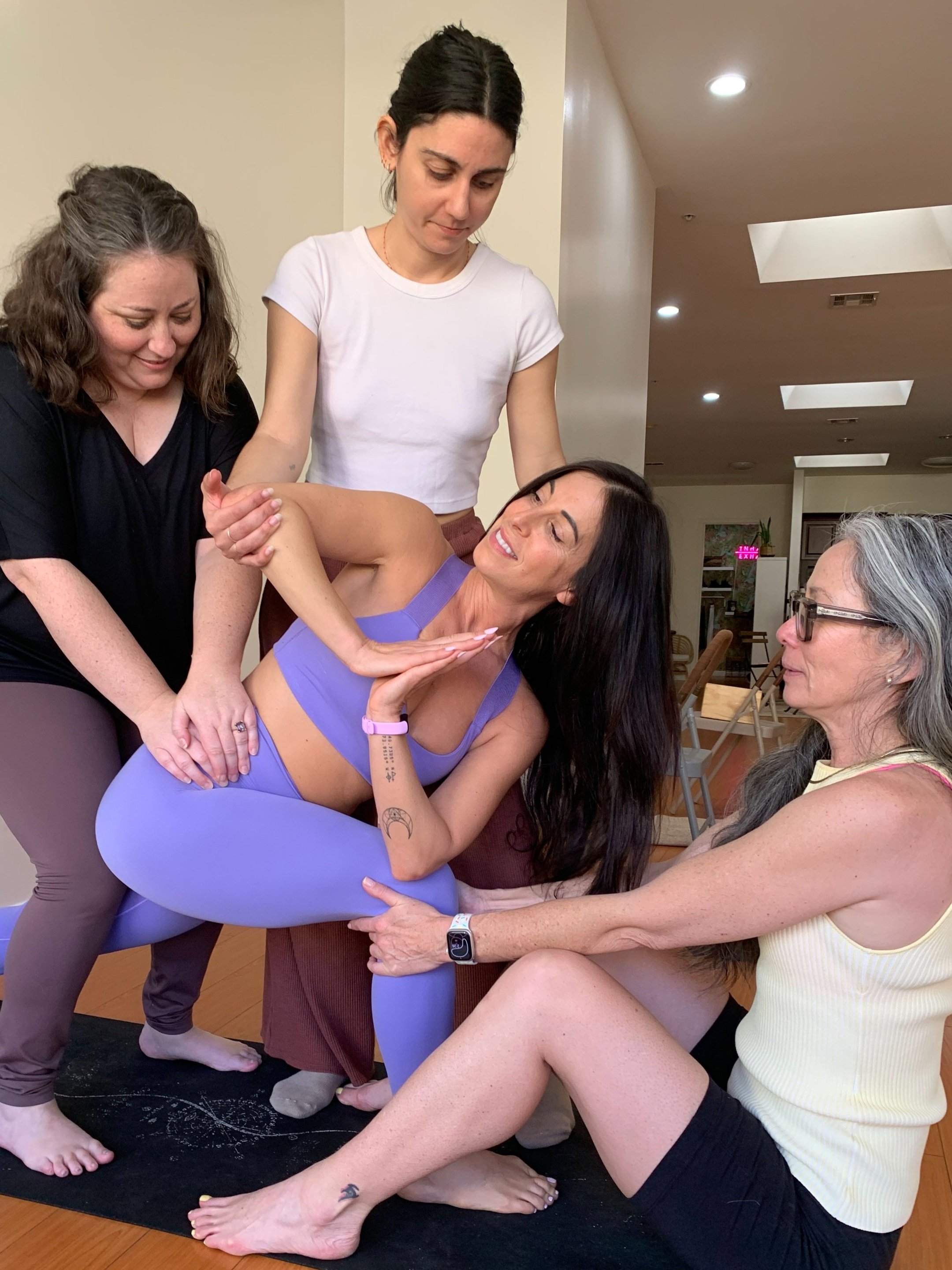7 Ways Katonah Yoga is different
7 Ways Katonah Yoga Differs From Traditional Yoga
1. Ask a question
A Katonah yoga class is more of a workshop-style focus. Students have time to learn instructions, utilize props, receive hands-on adjustments and ask a question to help them understand their body. The practice can be described as ‘human origami’ where each pose is meant to “fit.” For example- your body fits from thigh to chest, knee to armpit, hand to elbow, hand to heel, palm to sole and shoulder to knee. When you accomplish this, you gain stability. Each shape sheds light on your habits, offering fresh perspective and insight. Through a Katonah Yoga practice, you may begin to ask yourself: How do you get out of my own way? How do I get over what I hold onto?
2. Work smarter, not harder
Stability is created through alignment of angles of the structure of bones and joints. Think of a building, its strength comes from its structure (or bones) not from the cement (which is compared to muscle). When you use your bones as a boundary, you can only go so far, making you less likely to injure yourself or overstretch. According to Chinese Medicine energy moves through organs, bones, and joints, as opposed to muscles, which are too dense and hold patterns. So a well-aligned posture allows energy currents to move through you, making asana feel effortless.
3. Organize yourself
Organs will work, no matter how much space they have. Whether your structure is like a snail shell or high rise building. Through the practice of Katonah Yoga, you will optimize your organ function. Daily life commands prolonged sitting, standing, slumping, overworking, and over-muscling which takes its toll on our organs. Through the lens of the 5 Element theory each posture creates a dialogue for your organs to exchange. The element of Fire builds heat, the Earth element promotes healthy digestion, your digestion produces the Metal element that melts into liquid and supports the Waters of your body that flush your kidneys and nourish your Wood element that supports your liver function.
4. Cross-Reference
Alignment not only focuses on the bones and organs but on the space between them through the principle of “cross-referencing.” Imagine trying to find the same distance from your right shoulder to your left hip and your left shoulder to your right hip—giving your organs maximum space and your bones a solid and stable shape. Like a the crossbars of the Eiffel Tower, the relationship between two body parts can create stability in a pose and engage your imagination.
5. Practical Geometry
Geometry is at work throughout class- foundation is built from the ground up to create stable angles. The focus starts with a 90 degree angle that is considered the most stable. For example, a in the Katonah Yoga practice, a downward facing dog is considered a 60 degree angle from the hips to the ankles to the heels, and is measured from a 90 degree plank pose. Through every shape, the structure holds up the frame, boundaries frame up the structure, spins and turns generate currency, and cross referencing helps bring a sense of dimension.
6. Props are tools
🧱 Blocks are bones
🪢 Straps are ligaments
💪 Sandbags are muscle
👑 Blankets are thrones
This practice engages with students to encourage building technique around utilizing props. Postures are made better to support practitioners to scaffold and create a boundary to explore and move more freely.
7. Turn off autopilot
Katonah Yoga uses the practice to move students from their “first nature”—one’s unconscious habitual patterns that they came into this world with and may not be serving them—to their “second nature,” the functional learned habits that become effortless. When you turn off autopilot you become more conscious in your movements so that you don’t fall back into your habits. The goal is to become powerful, transform, and gain insights to take you somewhere new in your body, in your mind and eventually in your life.
“Katonah Yoga® is a syncretic Hatha yoga practice developed by Nevine Michaan over 40 years. She and her teachers incorporate classical Hatha yoga with Taoist theory, geometry, magic, mythology, metaphor, and imagination — in a practical framework designed to potentiate personal and communal well-being.
Framing the practice, maps of time and personal space are defined and refined. Themes using asana as origami, manipulating form for function, and developing a sense of personal measure are incorporated in Katonah Yoga practices.
Katonah Yoga is organized around three principles of esoteric dialogue: all polarities are mediated by trinity; the universe has pattern, pattern implies intelligence; by virtue of repetition there is potential for insight.
Revelations are revolutionary.”

